PaleoArt by Russell J. Hawley

Russell graduated from the University of Colorado in 1991 with a degree in fine art. His artwork has appeared in the America's Smithsonian Anniversary traveling exhibition, games, t-shirts and coffee mugs, Prehistoric Times magazine and books, including Mike Everhart's Oceans of Kansas and Dr. Dale Russell's Islands in the Cosmos. He also drew quarry maps for Dr. Robert Bakker in the early 90's. In 1996 he worked for Raptors to Rex: The Dinosaur Predators, a travelling dinosaur exhibit. After his exile to Wyoming in 1997, he began volunteering at the Tate Geological Museum at Casper College. After several months the director of the museum realized that Russell wasn't going to go away and started paying him a salary. His current duties include giving tours, writing articles for the museum newsletter, and producing illustrations for the museum displays.
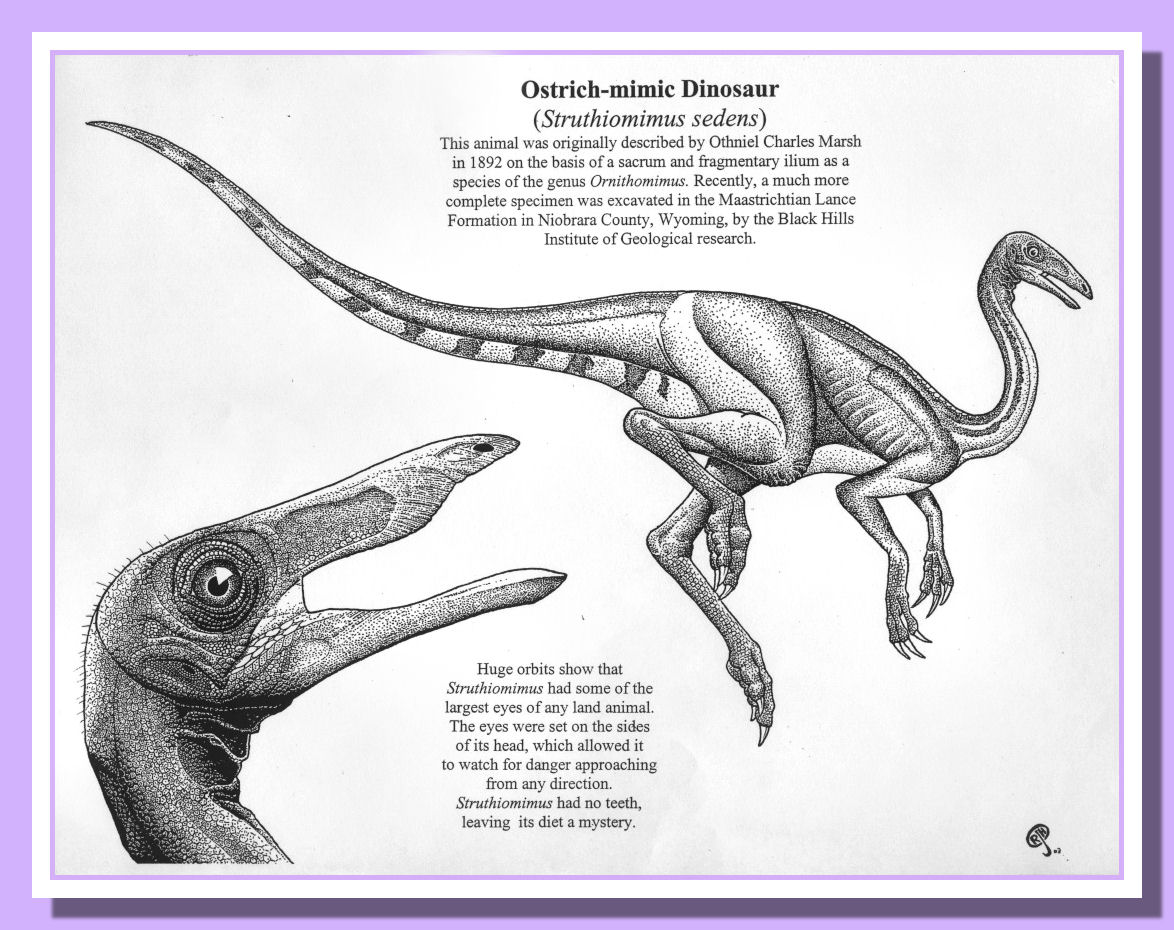
Struthiomimus sedens - Maastrichtian, Lance formation, Wyoming

Stenonychosaur (Troodon formosus) - Titanosaur (Rapetosaurus) - Roberto Abel's Neoceratosaur (Abelisaurus comahuensis) - Tyrannosaur (Tyrannosaurus rex) - Mongolian Caenagnathid (Oviraptor philoceratops) - Giant Chasmosaurine (Torosaurus latus)
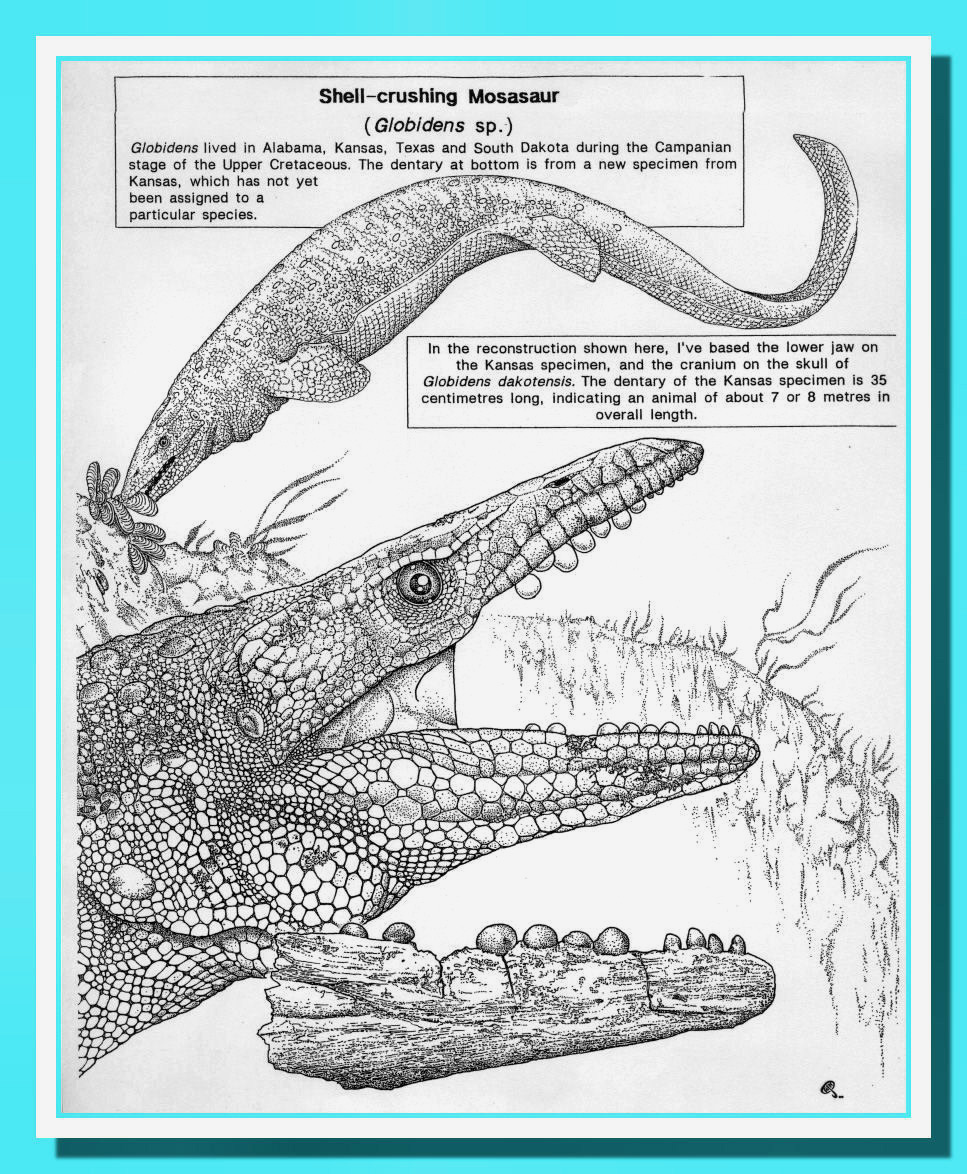
Shell-crushing Mosasaur (Globidens sp.) - Campanian stage of Upper Cretaceous, USA
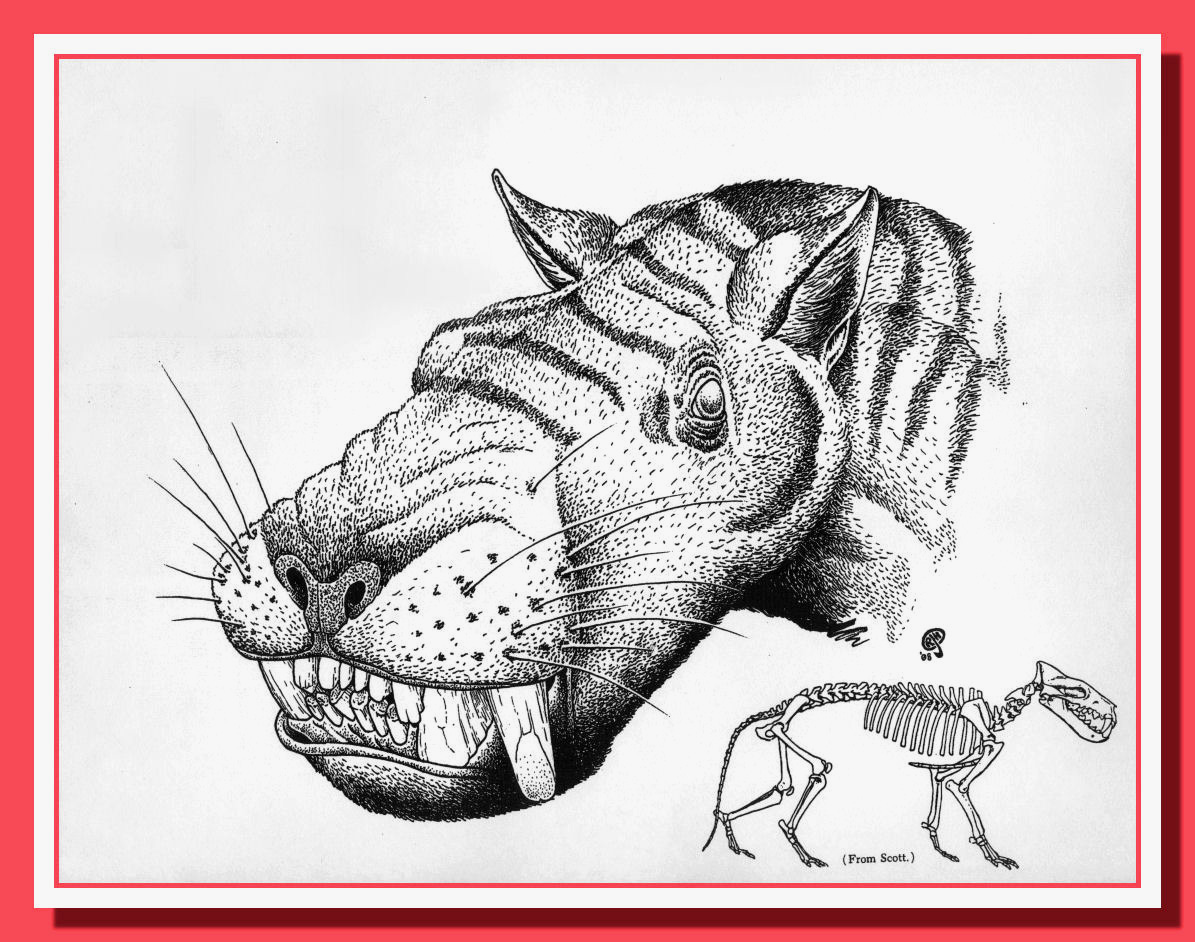
Creodon (Hyaenodon horridus) - Restoration based on specimen in the Japh Boyce collection
The larges species of Hyaenodon was Hyaenodon horridus. This restoration is based on huge specimen from South Dakota which had a skull fully half a metre long. It has a much blunter snout than tapering, doglike snout seen in a medium-sized hyaenodonts, and its muzzle actually becomes broader further forward so that the greatest width is across the roots of the upper canine teeth. In older hyaenodonts the anterior teeth frequentely became worn or chipped from crushing the bones of their prey.
Locality: Brule member of the White River formation, South Dakota - Stage: Mid-Priabonian (Equivalent to Orellan mammalian age) - Period: Early Oligocene Epoch of the Tertiary Period - Age: 30 million years.
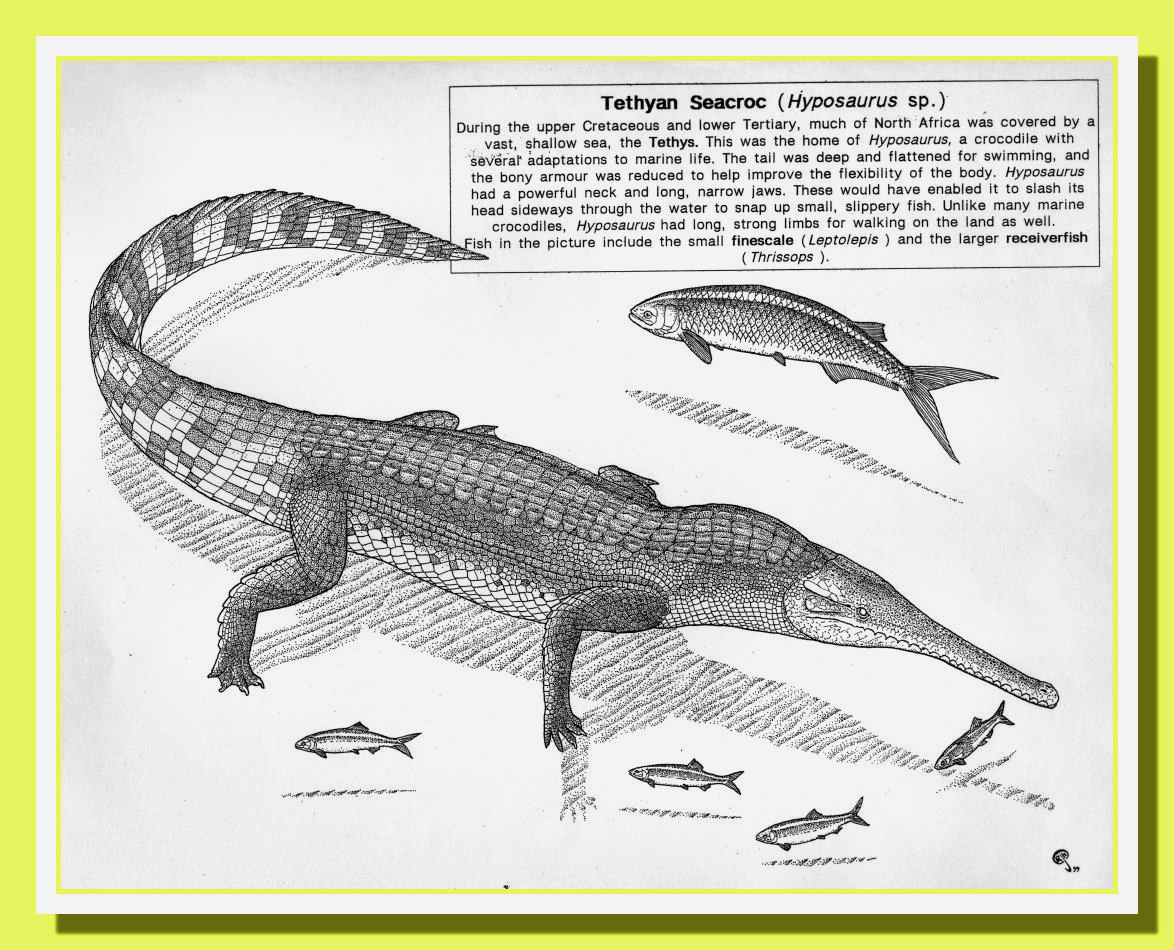
Tethyan Seacroc (Hyposaurus sp.)
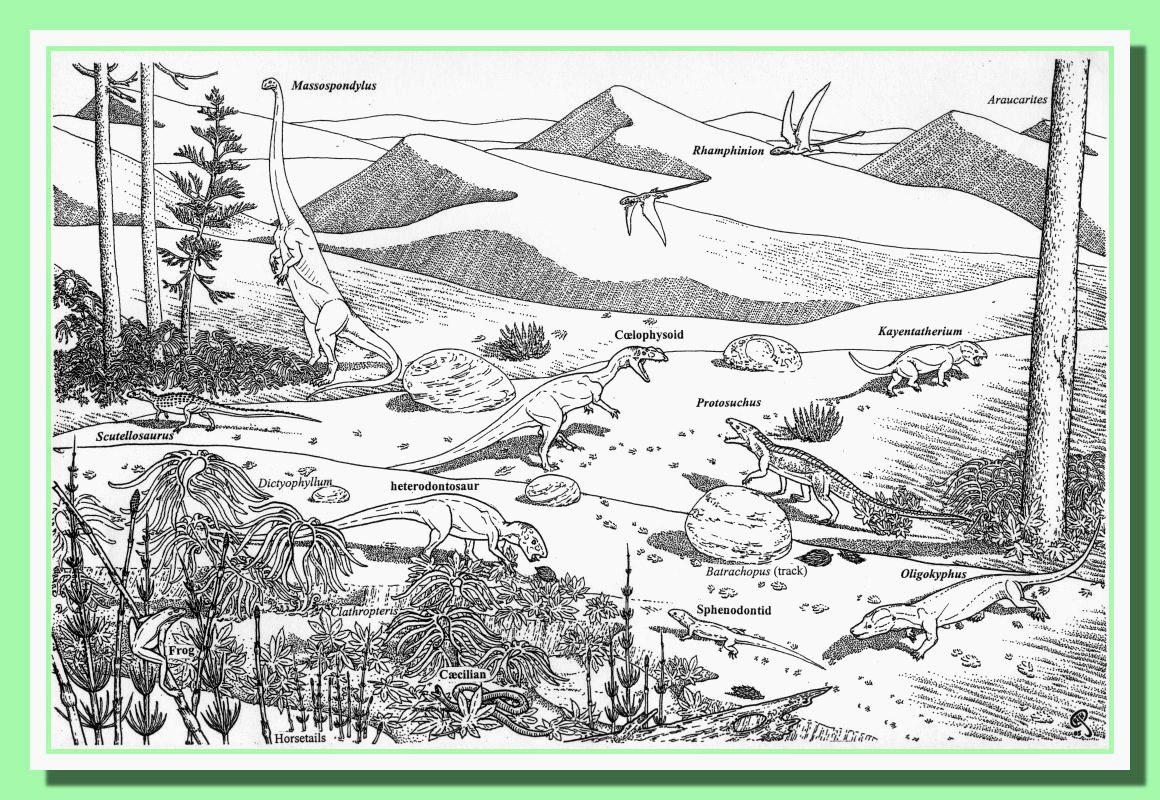
Kayenta formation
The only dinosaur fossils in Wyoming that date from the beginning of the Jurassic period are theropods footprints from the Nugget sandstone. But fossils from the Kayenta formation of Arizona give us a more complete picture of the animal life of the Western North America at this time. Condition seem to have been arid, and extensive dune fields covered the landscape. On the floodplains things would have been considerably greener, with stands of big auracarian conifer trees. Huge umbrella-like star ferns and horsetails would have grown near the waterways. Early Jurassic dinosaurs were mostly small; at 4 to 6 metres long the prosauropod plant-eater Massospondylus was the giant of the bunch. Small theropods shared the top predator niche with a variety of terrestrial crocodilians. Oligokyphus and Kayentathrium were mammal-like synapsids.
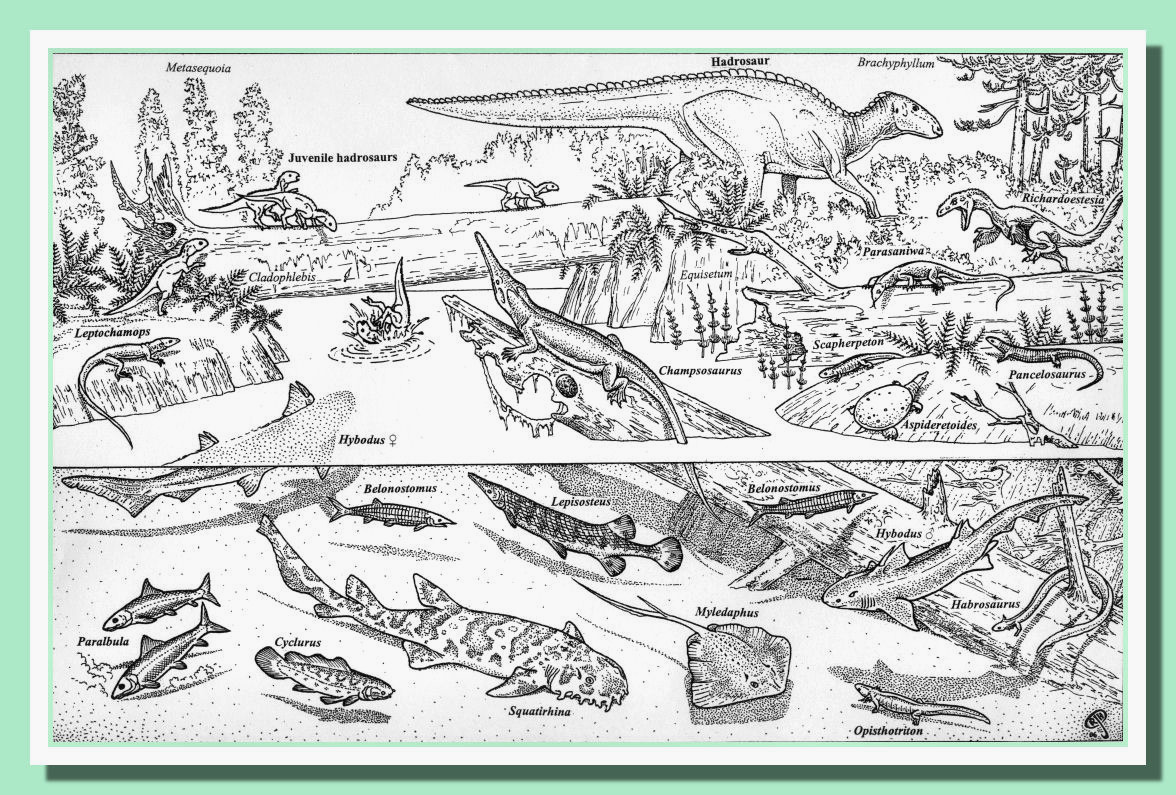
Mesaverde formation
Eastern Wyoming was under the sea during the late-middle and early-late Campanian stage of the Late Cretaceous period, but this was a transitional time for the rest of the state. The western shore of the mid-American seaway would periodically advance to cover most of Wyoming, only to recede again as the land was uplifted or as the sea level dropped. The result was a complex sequence of shale, sandstone and coal beds representing seafloor, river and swamp deposits: the Mesaverde formation. Fossil finds made by J.P. Cavigelli and David DeMar Jr. have revealed what kinds of animals lived in Wyoming during Mesaverde times, although many of these are represented only by isolated teeth and scales. Little has been published about plant fossils from the Mesaverde -- The plants shown here are from slightly earlier Milk River Formation of Alberta, Canada.

Land Whale (Pakicetus attocki) - Early Eocene, Kuldana formation, Pakistan
Russell J. Hawley © Copyright
